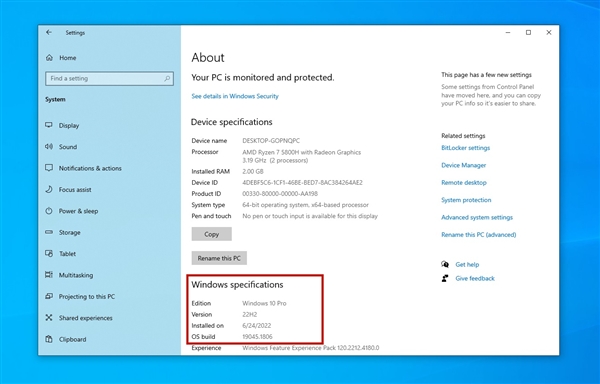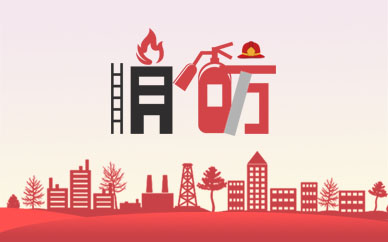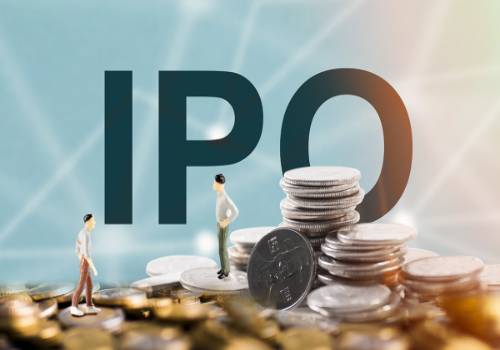需求激增或将推高今年石油均价
2023-07-31 08:38:33 | 来源:中国石化新闻网 |
2023-07-31 08:38:33 | 来源:中国石化新闻网 |
石油需求强劲,并可能在今年第三季度进一步增强
世界上最大和第三大原油进口国,将成为全球原油需求增长的主要推动力
 (相关资料图)
(相关资料图)
由于原油需求创历史新高和供应减少或将导致巨大的市场缺口,高盛银行预计油价将在今年年底升至每桶86美元
据油价网2023年7月25日报道,由于市场开始相信基本面反映出的状况,同时寻找经济衰退的迹象,布伦特原油价格最近几天在每桶80美元上方找到了底部新高。
分析师表示,由于欧佩克+减产和美国页岩产量增长放缓导致供应紧张,同时需求强劲是由于亚洲两个主要原油进口国的高峰驾驶季节和强劲消费,需求可能在第三季度进一步加强。
这并不是说对经济衰退的担忧没有影响市场。相反,业内人士继续权衡美国和欧洲经济大幅下滑的可能性,以及市场趋紧和年底前供应严重不足的预期。
但市场需要的紧张供需平衡的证据可能终于出现了。
“供应跟不上的严重问题”
世界最大能源部长国际组织的国际能源论坛(IEF)秘书长约瑟夫·麦克莫尼格尔表示,尽管需求已经恢复到疫情前的水平,并在今年创下年均数据新高,但供应却仍难以跟上,这为今年下半年油价上涨奠定了基础。
麦克莫尼格尔日前在接受CNBC记者采访时表示,需求正在上升,从第三季度开始市场将出现大规模库存减少并持续到明年。
麦克莫尼格尔是在出席在印度举行的G20能源部长会议间隙接受CNBC记者采访时发表上述讲话的。他说,“因此,今年下半年我们将面临供应跟不上的严重问题,因此,你届时将看到价格对此做出反应”。
他补充说,世界上最大和第三大原油进口国将成为全球原油需求上升的主要推动力。
据麦克莫尼格尔称,今年下半年,两国原油日需求量预计将增加200万桶。
“我们将看到库存大幅下降,这将向市场发出需求肯定在回升的信号。所以你会看到价格对此做出反应。”麦克莫尼格尔告诉CNBC记者。
麦克莫尼格尔指出,如果需求超出预期并市场过度收紧,欧佩克+产油国可能会采取行动,取消目前的部分减产量。
需求不断上升
国际能源论坛7月早些时候援引总部设在利雅得的联合石油数据库(JODI)公布的数据称,5月份全球原油需求比4月份平均每天增加300多万桶,接近今年3月份的历史最高需求水平。
美国能源信息署(EIA)也预测,库存下降将从今年第三季度开始并持续到2024年第四季度,这将给油价带来上行预期。EIA在其7月份的短期能源展望(STEO)报告中表示,今年上半年,全球原油库存平均日增60万桶,但今年下半年将平均每天减少70万桶。
高盛银行预计,由于原油需求创新高和供应减少将导致市场出现大规模供应缺口,油价将在今年年底升至每桶86美元。
高盛银行石油研究主管Daan Struyven近日对CNBC记者表示,“由于需求达到历史新高,我们预计下半年需求将出现相当大的缺口,第三季度石油日需求缺口将接近200万桶”。
经济衰退可能性下降
高盛银行分析师对美国可能避免经济衰退的看法也更为乐观。之前对经济衰退的担忧令油价承压,今年第二季度油价跌至每桶80美元以下。
上周,高盛银行将美国经济在未来12个月开始衰退的可能性从25%下调至20%,原因是最近的经济数据增强了高盛银行的信心,“将通胀降至可接受的水平并不会导致衰退”,高盛银行研究部主管、首席经济学家简·哈祖斯如是说。
高盛银行分析师和许多其他分析师一致认为,市场普遍预计美联储将在7月26日的会议上加息。但许多人认为,这可能是货币紧缩周期的结束。原油市场将密切关注美联储的决定。
OANDA高级市场分析师埃德·莫亚表示:“原油价格正在试探性地突破限制,因为尽管全球经济正在出现疲软,但人们仍然预期原油市场将保持紧张。”而近日油价反弹至三个月高位,布伦特原油价格突破每桶82美元。
如果美国成功地避免了经济衰退,而亚洲加大经济刺激力度以帮助今年下半年反弹,原油市场参与者将更多地关注基本面,也就是今年晚些时候石油市场即将出现的供应短缺和价格上涨。
李峻 译自 油价网
原文如下:
Demand Surge Set To Push Oil Prices Higher This Year
· Demand is robust and likely to further strengthen during the third quarter.
· The world’s largest and third-largest oil importers, respectively, will be the key drivers of rising oil demand.
· Goldman Sachs expects oil prices to rise to $86 per barrel at year-end, as record-high oil demand and lowered supply will lead to a large market deficit
Brent oil prices have found a new higher floor at above $80 per barrel in recent days as the market starts to believe in fundamentals while looking out for signs of a recession.
As supply is tightening due to the OPEC+ cuts and a slowdown in U.S. shale production growth, demand is robust and likely to further strengthen during the third quarter with peak driving season and strong consumption in the two leading Asian crude importers, analysts say.
That’s not to say that fears of recessions aren’t influencing the market. On the contrary, participants continue to weigh the likelihood of a material downturn in the U.S. and Europe against expectations of a tightening market and large supply deficits through the end of the year.
But the evidence of tight supply-demand balances that the market needed may finally be here.
“Serious Problems With Supply Keeping Up”
While demand has already returned to pre-pandemic levels and set for a record annual average this year, supply is having trouble keeping up, setting the stage for higher oil prices in the second half of this year, according to Joseph McMonigle, Secretary General of International Energy Forum (IEF), the world’s largest international organization of energy ministers.
Demand is rising, and the market will see massive inventory draws beginning this quarter and lasting through next year, McMonigle told CNBC in an interview this weekend.
“So, for the second half of this year, we’re going to have serious problems with supply keeping up, and as a result, you’re going to see prices respond to that,” McMonigle told CNBC on the sidelines of a G20 energy ministers meeting in India.
The world’s largest and third-largest oil importers, respectively, will be the key drivers of rising oil demand, he added.
Combined, these two countries are expected to account for 2 million barrels per day (bpd) of demand increase in the second half of this year, according to McMonigle.
“We’re going to see much more steep decreases in inventory, which will be a signal to the market that demand is definitely picking up. So you’re going to see prices respond to that,” he told CNBC.
In case of demand exceeding expectations and tightening the market too much, OPEC+ producers could move to unwind some of the current cuts, the IEF secretary general noted.
Demand Rising
Global oil demand jumped by more than 3 million bpd in May compared to April, nearing the record demand level seen in March this year, the IEF said earlier this month, citing data by the Joint Organizations Data Initiative (JODI).
The U.S. Energy Information Administration (EIA) also forecasts inventory drawdowns to start this quarter and continue until the fourth quarter of 2024, putting upward pressure on oil prices. Global oil inventories increased by an average of 600,000 bpd in the first half of 2023, but they will fall by an average of 700,000 bpd in the second half, the EIA said in its July Short-Term Energy Outlook (STEO).
Goldman Sachs expects oil prices to rise to $86 per barrel at year-end, as record-high oil demand and lowered supply will lead to a large market deficit.
“We expect pretty sizable deficits in the second half with deficits of almost 2 million barrels per day in the third quarter as demand reaches an all-time high,” Daan Struyven, head of oil research at Goldman Sachs, told CNBC on Monday.
Recession Odds Decline
Goldman’s analysts are also more optimistic that the U.S. could avoid a recession, fears of which have kept oil prices weighed down and below $80 per barrel in the second quarter of the year.
Last week, Goldman Sachs cut its probability that a U.S. recession will start in the next 12 months further, from 25% to 20%, due to the fact that the recent economic data have reinforced the bank’s confidence that “bringing inflation down to an acceptable level will not require a recession,” wrote Jan Hatzius, head of Goldman Sachs Research and the firm’s chief economist.
The Fed is largely expected to raise interest rates at the July 26 meeting, Goldman and many other analysts concur. But many believe this could be the end of the money-tightening cycle. The oil market will be closely watching the Fed decision—and most of all, the comments by Fed Chair Jerome Powell accompanying the decision—for clues about the economy.
“Crude prices are tentatively breaking out as expectations remain for the oil market to remain tight despite all global weakness that is emerging,” Ed Moya, senior market analyst at OANDA, said on Monday as oil prices rallied to a three-month high and Brent topped $82 per barrel.
If the U.S. succeeds in avoiding a recession and Asia increases economic stimulus to help a rebound in the second half of 2023, oil market participants will focus more on fundamentals, which have started to point to a supply deficit and higher prices later this year.
关键词:

































![逆水寒手游斩马奇遇怎么做(斩马奇遇任务攻略)[多图]](http://baiduimg.baiduer.com.cn/2022/0610/20220610012923174.jpg)















































































